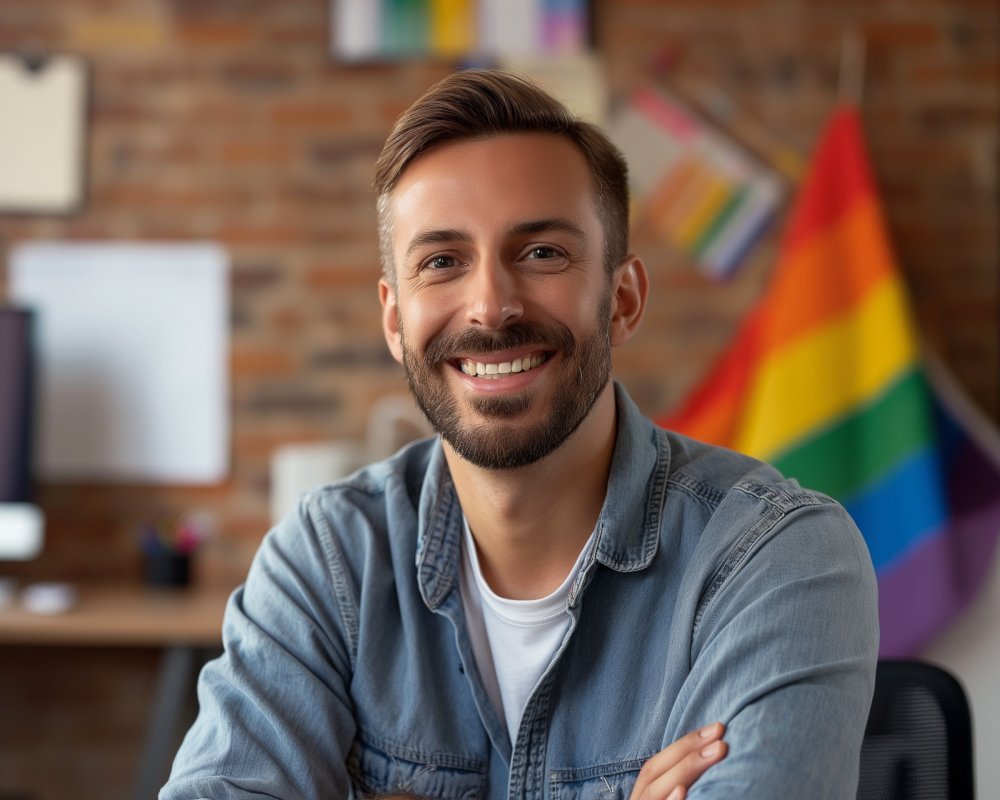
LGBTQ Discrimination: A Comprehensive Exploration of Causes, Impact, and Paths Forward
Table of Contents
- Introduction: LGBTQ Discrimination and Its Enduring Impact
- A Brief Historical Lens: “It’s Always Been About Discrimination for LGBT People”
- The Modern Landscape of LGBTQ Discrimination
- Causes of Discrimination: Why Do So Many People Hate Us Because We Exist?
- Inside the Mind of People Who Hate Gays
- Discrimination Against Gay Men: Specific Myths and Realities
- Discrimination Against Transgender People: Unique Challenges and Danger
- Why Do People Hate the LGBTQ+ Community So Much?: Common Themes
- Intersectionality: Race, Class, Ability, and More
- The Role of Religion, Culture, and Tradition
- Political Influences on LGBTQ Rights
- Psychological Effects of Discrimination on LGBTQ Individuals
- Global Perspectives: Regional Differences in LGBTQ DISCRIMINATION
- Pathways to Change: Overcoming Hate, Building Alliances
- Conclusion: Charting a Future Beyond LGBTQ Discrimination

1. Introduction: LGBTQ Discrimination and Its Enduring Impact
Discrimination against the LGBTQ+ (lesbian, gay, bisexual, transgender, queer, plus) community has deep roots in history, culture, and societal norms. Despite remarkable strides in LGBTQ rights in certain parts of the world—like the legalization of same-sex marriage in many countries, the recognition of transgender identities in public policy, or anti-discrimination laws in the workplace—homophobia, transphobia, and other forms of bias remain distressingly common. Such discrimination hinders the well-being of LGBTQ people, manifesting as hate speech, bullying, denial of services, or even violent hate crimes.
Why do people hate the LGBTQ+ community so much? This difficult question resonates with those who have experienced rejection or aggression simply because of who they are. Unfortunately, prejudice often operates within a framework of ignorance, fear, and stigma. In many contexts—religious, cultural, political—LGBTQ individuals are painted as threats to “traditional values.” Others attribute anti-queer sentiments to personal biases or internal conflicts. The result is that millions of LGBTQ folks worldwide still face hostility in their everyday lives.
To truly understand the scope of LGBTQ discrimination, one must recognize it is not just an individual act of hatred or a one-off moment of bullying. Instead, it is a systemic issue, upheld by cultural norms, institutional rules, and societal attitudes. LGBTQ discrimination can hinder people’s access to education, healthcare, employment, and legal protections. It also perpetuates mental health crises, as marginalized people struggle with anxiety, depression, and trauma stemming from constant invalidation or outright aggression.
The problem becomes more urgent when we consider how discrimination intensifies for specific identities within the LGBTQ+ spectrum. For instance, discrimination against gay men often differs in tone and pattern from discrimination against transgender people, though both experiences intersect with shared forms of social stigma. Additionally, LGBTQ people of color, disabled LGBTQ individuals, and those from lower socioeconomic backgrounds confront intersecting layers of oppression, compounding the stress of everyday life.
In this in-depth article, we’ll explore the historical roots of anti-LGBTQ prejudice, the modern reality of discrimination, and the causes of discrimination that drive such hostility. We will also ask: Why do so many people hate LGBT? By venturing Inside the Mind of People Who Hate Gays, we can better grasp the fears, misconceptions, and motivations behind their animosity. From there, we’ll discuss how intersectionality shapes discrimination, the role of religion and politics, and ultimately how we might chart a path forward that dismantles prejudice and fosters empathy, acceptance, and justice for LGBTQ communities worldwide.
Recommended
2. A Brief Historical Lens: “It’s Always Been About Discrimination for LGBT People”
Historically, same-sex love, diverse gender expressions, and non-heteronormative relationships have often been subject to misunderstanding, moral condemnation, or outright criminalization. The phrase “It’s Always Been About Discrimination for LGBT People” captures how embedded anti-LGBTQ sentiment has been within many societies. However, broad strokes across cultures and eras reveal that acceptance or rejection of queer identities varied widely. Some pre-colonial societies acknowledged and even revered individuals with fluid gender expressions, while others severely punished homosexuality as a social or religious taboo.
In Ancient Civilizations:
- Ancient Greece and parts of Rome allowed male same-sex relationships under certain constraints, though these were steeped in power dynamics and not universally accepted as “equal” partnerships.
- In certain Native American communities, two-spirit individuals (people with both masculine and feminine spirits) held special roles, reflecting a cultural respect for diverse gender expression.
Medieval and Colonial Periods:
- Over time, religious institutions codified moral rules, condemning “sodomy” as a severe offense. This shift, particularly with Christianity and later colonial expansions, introduced harsh punishments for same-sex conduct in legal systems worldwide.
- Colonial laws criminalizing homosexuality were imposed across Africa, the Americas, and Asia, effectively exporting homophobia and transphobia into cultures where they might have once been less rigid or more open.
The 19th and 20th Centuries:
- With the advent of psychological and medical “diagnoses” of homosexuality, gay, lesbian, and trans identities were pathologized, considered mental illnesses or moral failings.
- Police raids on gay bars, the crackdown on transgender visibility, and the stigma around “homosexuality as sin” were widespread.
- However, the mid-to-late 20th century also saw the rise of LGBTQ liberation movements. The Stonewall Riots in 1969 marked a major turning point in the United States, fueling pride marches and the pursuit of legal rights.
These historical backdrops inform the persistent question: “Why do so many people hate LGBT?” Because prejudice is centuries-old, it’s woven into societal norms and cultural narratives about morality, family, and tradition. This historical viewpoint also contextualizes modern struggles: Even when major legal reforms are enacted (like same-sex marriage), it can take generations to uproot bigotry entrenched in communal memory and law.
Thus, discrimination is not a “modern invention,” nor something conjured out of thin air. It’s the culmination of centuries of stigma, fear, religious teachings, and political structures that have systematically denied LGBTQ people the right to live openly and safely.

3. The Modern Landscape of LGBTQ Discrimination
In modern times, conversations around LGBTQ DISCRIMINATION have evolved, partly thanks to greater visibility through media, activism, and progressive legislation in some regions. Yet discriminatory attitudes endure—even in places considered “progressive”—and manifest in a multitude of ways. Understanding the shape of contemporary bias requires an acknowledgment of both overt and subtle forms of prejudice.
Overt Discrimination
- Hate Speech and Violence: Slurs, threats, and physical attacks remain prevalent. Hate crimes against LGBTQ individuals often increase when public discourse becomes more polarized, or when political figures demonize “non-traditional” identities.
- Workplace and Housing Discrimination: Many LGBTQ people face hiring biases, unfair firing, or harassment. Landlords may refuse to rent to same-sex couples or trans renters. While some countries outlaw such discrimination, enforcement varies.
- Criminalization of Homosexuality: In more than 60 countries, same-sex relations are still illegal. Punishments range from fines to imprisonment or even death sentences. LGBTQ travelers and residents in these regions may live in secrecy, fearing exposure.
Subtle Discrimination
- Microaggressions: Casual remarks (“That’s so gay!”) or assumptions about a person’s partner or gender can create a hostile environment. Such everyday biases, while not always intended as vicious, perpetuate stigma.
- Health Care Barriers: Transgender people often struggle to find respectful medical professionals who understand transition-related care. Gay and bisexual men may face judgment about HIV testing or sexual health.
- Bullying in Schools: LGBTQ youth disproportionately experience bullying or isolation, leading to mental health challenges. Teachers or administrators sometimes overlook or trivialize these incidents, failing to protect queer students.
Social and Cultural Norms
- Heteronormativity: The presumption that everyone is heterosexual influences textbooks, movies, commercials, and everyday assumptions. This subtle preference excludes or marginalizes queer stories and relationships.
- Gender Norms: Societies often punish deviations from assigned gender roles, e.g., masculine women or feminine men face teasing, harassment, or stigmatization.
While the last two decades have witnessed unprecedented visibility for queer celebrities, politicians, and activists, the interplay of acceptance and backlash remains complex. The question, “Why do people hate the LGBTQ+ community so much?” remains relevant because, for every public figure championing equality, there are those who cling to fear and misconceptions. Understanding these modern dynamics illustrates how LGBTQ discrimination persists in both laws and everyday interactions. A single legal victory—like marriage equality—does not single-handedly erase the prejudice that’s been cultivated over generations. Instead, it simply lays groundwork for ongoing education, advocacy, and cultural shifts toward genuine acceptance.
4. Causes of Discrimination: Why Do So Many People Hate Us Because We Exist?
One of the most heart-wrenching questions for LGBTQ individuals is: “Why do so many people hate us because we exist?” This question gets to the root of LGBTQ discrimination: the notion that non-heterosexual orientation or non-cisgender identity is, by itself, a provocation for hostility. Several overlapping factors answer why do so many people hate LGBT people:
1. Deep-Rooted Cultural Norms
Cultural traditions often center on heteronormative family structures—one man, one woman, producing children. LGBTQ identities disrupt these ideals, and to some, this is seen as a threat to cultural continuity or “morality.” Because these norms have existed for centuries, deviation feels taboo or “unnatural” to those not exposed to diverse perspectives.
2. Religious Interpretations
Many major religions possess teachings—some explicit, some interpretive—that condemn same-sex activity or non-conforming gender expression as sinful. While not every follower believes these interpretations, they often form the backbone of institutional homophobia or transphobia. Even when religious texts are ambiguous, some leaders selectively emphasize negative readings, reinforcing bigotry among adherents.
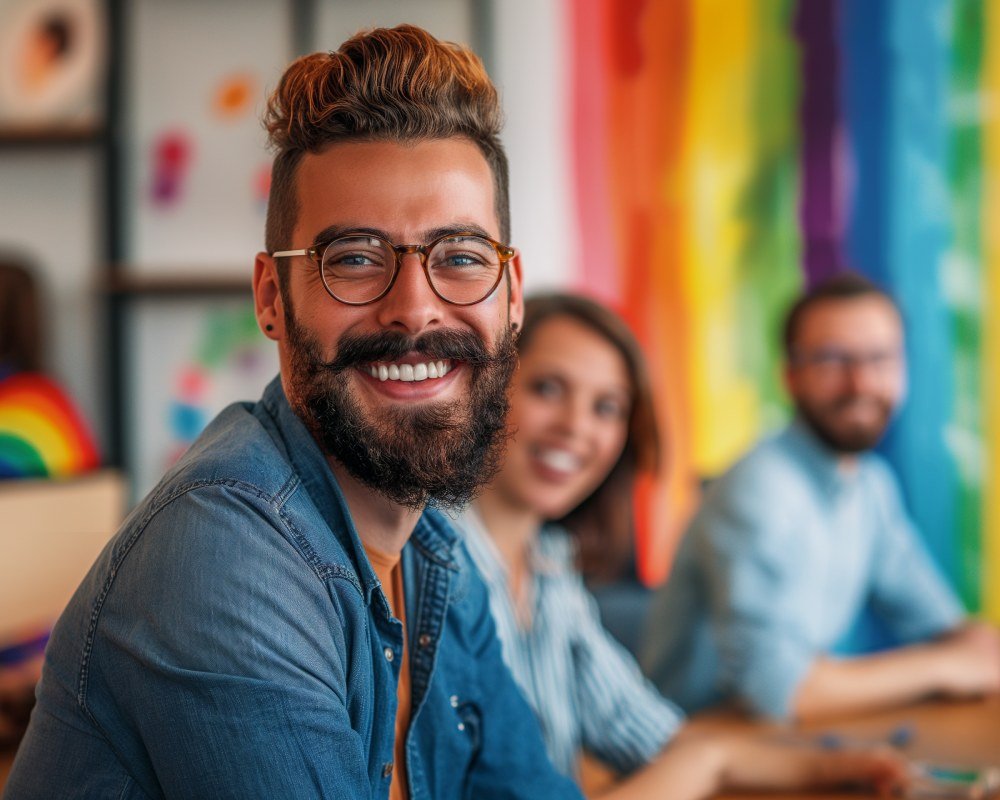
3. Fear of the Unknown
Humans often fear what they do not understand. People discriminate against LGBTQ people for a variety of reasons, including ignorance. If someone never meets an openly queer or trans person, they rely on stereotypes to form opinions. Media sensationalism or misinformation can fuel these stereotypes, painting LGBTQ individuals as predatory, confused, or immoral.
4. Projection and Internal Conflict
Some extreme homophobes might be grappling with their own unacknowledged same-sex attractions, turning self-hate into outward aggression. Societal pressure to conform can trigger overcompensation—a fervent condemnation of that which one fears within oneself.
5. Political or Social Gain
Politicians, religious leaders, or media personalities sometimes exploit anti-LGBTQ sentiment to rally their base. This tactic can unify those who feel threatened by social change, reinforcing bigotry in exchange for power or popularity.
6. Lack of Education and Representation
If children grow up without encountering positive portrayals of LGBTQ lives—whether in families, media, or curricula—they may adopt hateful attitudes uncritically. Homophobic or transphobic jokes, slurs, and misinformation then propagate through peer groups unchecked.
Ultimately, these causes reflect a mixture of ignorance, fear, tradition, and power dynamics. By highlighting them, we can shift from passive acceptance of homophobia to a proactive stance of addressing and debunking these harmful narratives. Understanding the “why” behind discrimination is the first step to breaking the cycle and fostering empathy—reminding ourselves that being LGBTQ is simply one dimension of human diversity, not an invitation for hate.
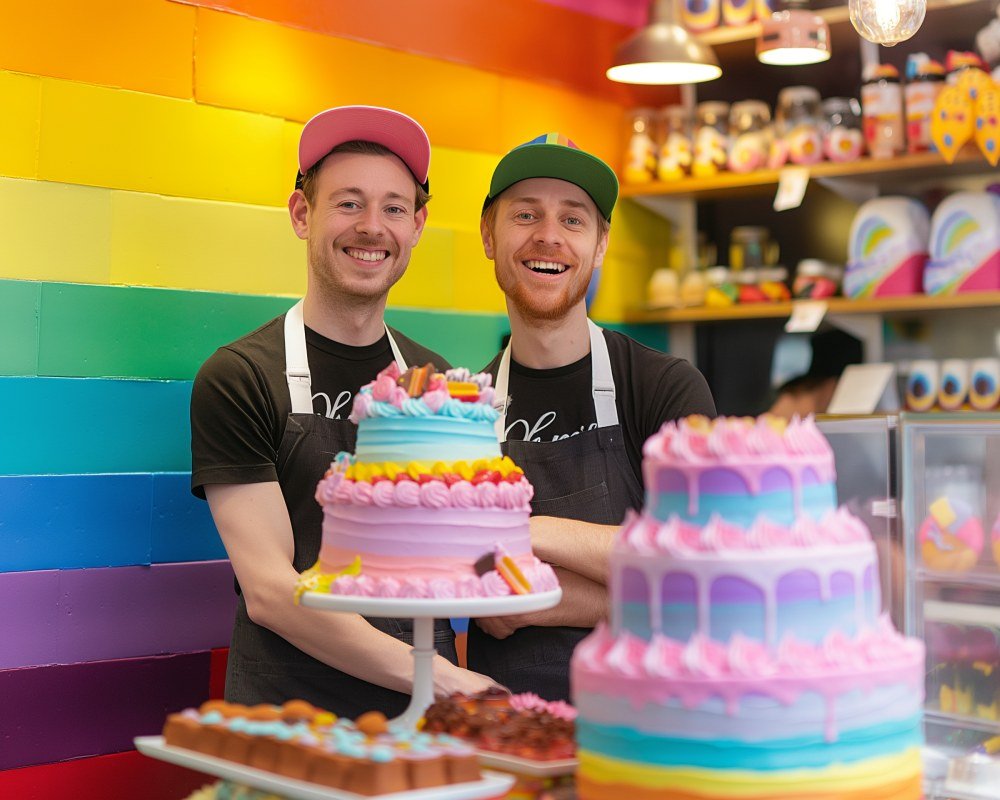
Recommended
5. Inside the Mind of People Who Hate Gays
A difficult but necessary topic to examine is “Inside the Mind of People Who Hate Gays.” While each individual is unique, certain shared psychological and social factors often underlie homophobia (and by extension, transphobia or biphobia). Understanding these factors can help us develop more effective strategies to combat hate and promote empathy.
1. Cognitive Dissonance and Rigid Worldviews
People with strict beliefs about gender and sexuality may find LGBTQ identities incompatible with their worldview. If they were taught, for instance, that a “real man” is always heterosexual and masculine, encountering a gay man who defies this mold threatens their sense of certainty. In response, some double down on hostility—an unconscious attempt to protect their worldview from collapsing.
2. Defense Mechanism: Projection
Psychological studies suggest that intense homophobes sometimes harbor their own same-sex attractions. These individuals feel shame, fear, or confusion about their inclinations. Instead of confronting these feelings, they project hostility outward, demonizing “gays” to distance themselves from their internal conflict.
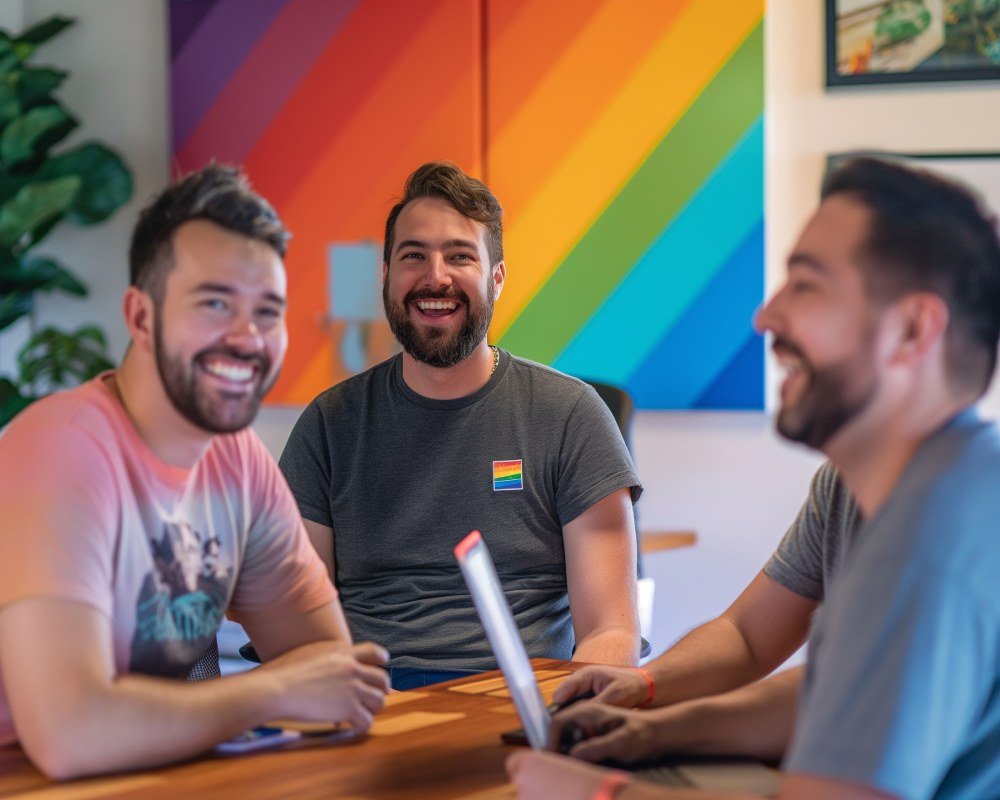
3. Learned Prejudice
Hatred is often transmitted through familial or cultural conditioning. Children exposed to relentless anti-gay messages, whether from parents, peers, or religious communities, absorb these beliefs without question. By adulthood, homophobic ideas feel normal. Reinforcing environments—like conservative media or friend groups—further entrench this prejudice.
4. Authoritarian Personality Traits
Research linking authoritarian tendencies to prejudice finds that some who hate LGBTQ people value conformity, obedience, and tradition. They see deviations from “the norm” (like homosexuality) as threats to social order. Punishing or ostracizing perceived deviants becomes a way of upholding what they believe is moral or correct.
5. Misinformation and Fear
Some who hate gays mistakenly view LGBTQ folks as predators or as spreading “unnatural” lifestyles. Alarmist propaganda—“They’re coming for your children!”—fuels this fear. Lacking correct information or personal contact with LGBTQ people, these individuals see hate as self-protection.
6. Group Identity and Scapegoating
Human beings often bond through shared enemies. Groups that blame economic or social problems on LGBTQ communities find solidarity in that scapegoating. Politicians frequently exploit this dynamic, framing LGBTQ rights as antagonistic to national or religious identity.
Understanding the deeper psychological triggers behind homophobia underscores an essential truth: hatred rarely arises from rational analysis. Instead, it often emerges from fear, ignorance, or unresolved inner turmoil. While none of this justifies hate, it does point to possible interventions: dialogue, education, and mental health support can dissolve the illusions that sustain homophobia. Over time, these strategies might prevent new generations from inheriting the cycle of prejudice.
6. Discrimination Against Gay Men: Specific Myths and Realities
Discrimination against gay men is a distinct facet of anti-LGBTQ bias, shaped by entrenched gender norms and stereotypes. While lesbian women, bisexuals, and transgender individuals also face unique forms of prejudice, gay men often encounter hostility specifically tied to masculinity—one of the most rigid constructs in many societies.
Common Stereotypes
- Promiscuity: A pervasive myth paints gay men as hyper-sexual, constantly seeking casual encounters. While every community includes a range of sexual behaviors, this stereotype overlooks the reality of gay men in stable, long-term relationships, monogamous couples, or those not focused on sexual pursuits at all.
- Weakness or “Feminization”: Many cultures associate masculinity with aggression, stoicism, and heterosexual desire. Gay men, by existing outside that formula, can be labeled as “unmanly.” This triggers bullying, ostracism, or paternalistic claims that they need to be “fixed.”
- Predatory Behavior: A particularly harmful lie portrays gay men as child molesters or sexual predators. This conflation of pedophilia with homosexuality is baseless, yet it persists, fueling panic and justifying exclusion in spaces like education or youth organizations.
Social and Legal Consequences
- Bullying and Hate Crimes: Boys perceived as effeminate in school often endure relentless teasing or violence. Adult gay men may face assault in or near queer venues, targeted by those specifically seeking to harm them for their orientation.
- Family Rejection: Sons who come out to conservative families may be disowned, physically harmed, or forced into “conversion therapy.” This trauma can have lifelong psychological and economic ramifications.
- Workplace and Military: Before the repeal of policies like “Don’t Ask, Don’t Tell” in the United States, gay men in the military risked discharge if their sexuality was discovered. Even today, in certain workplaces, subtle discrimination can block promotions or lead to harassment.
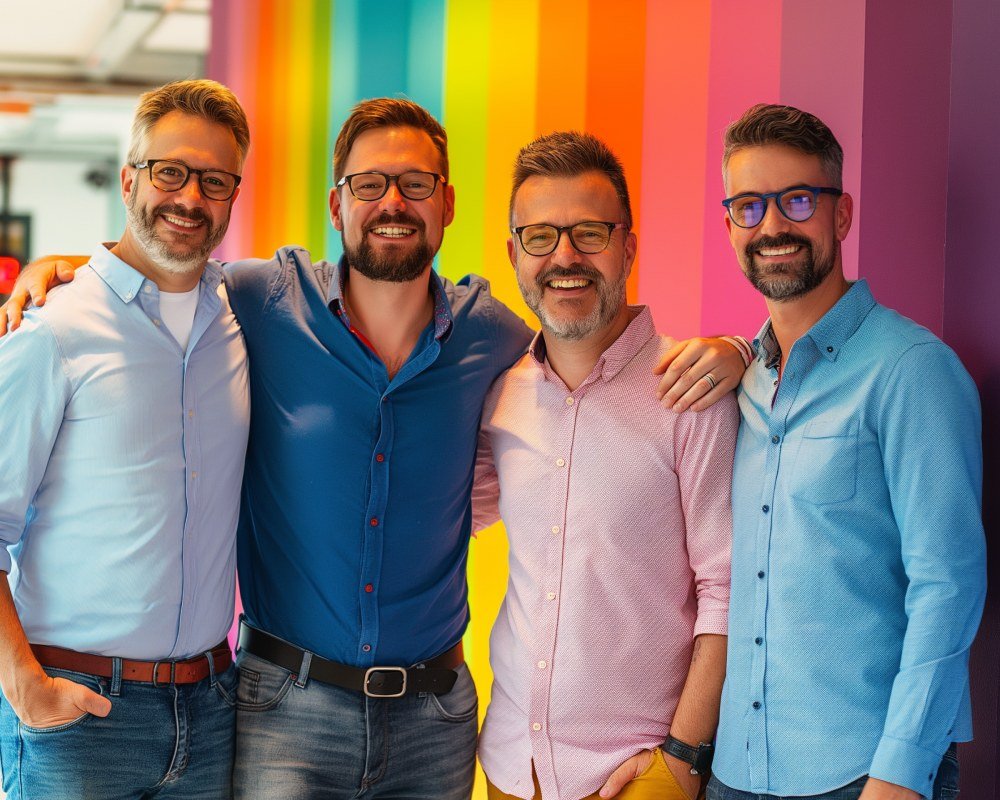
Moving Beyond Myths
In challenging such prejudice, representation plays a critical role. Positive media portrayals—like loving husbands in TV series or openly gay athletes—can dismantle the idea that gay men are deviants. Public health education that addresses HIV/AIDS without stigmatizing gay men also shifts narratives from blame to awareness. Organizations worldwide push for legal reforms, corporate inclusion policies, and the celebration of Pride events that highlight healthy, diverse, and community-oriented gay men.
Though strides have been made, the question persists: “Why do so many people hate LGBT?” especially gay men. The short answer often centers on gender norms and moral panic, rooted in centuries of culture. Yet incremental progress is visible as younger generations embrace broader definitions of masculinity. Challenging archaic beliefs at every turn can gradually erode the hostility directed at gay men and open space for acceptance and respect.
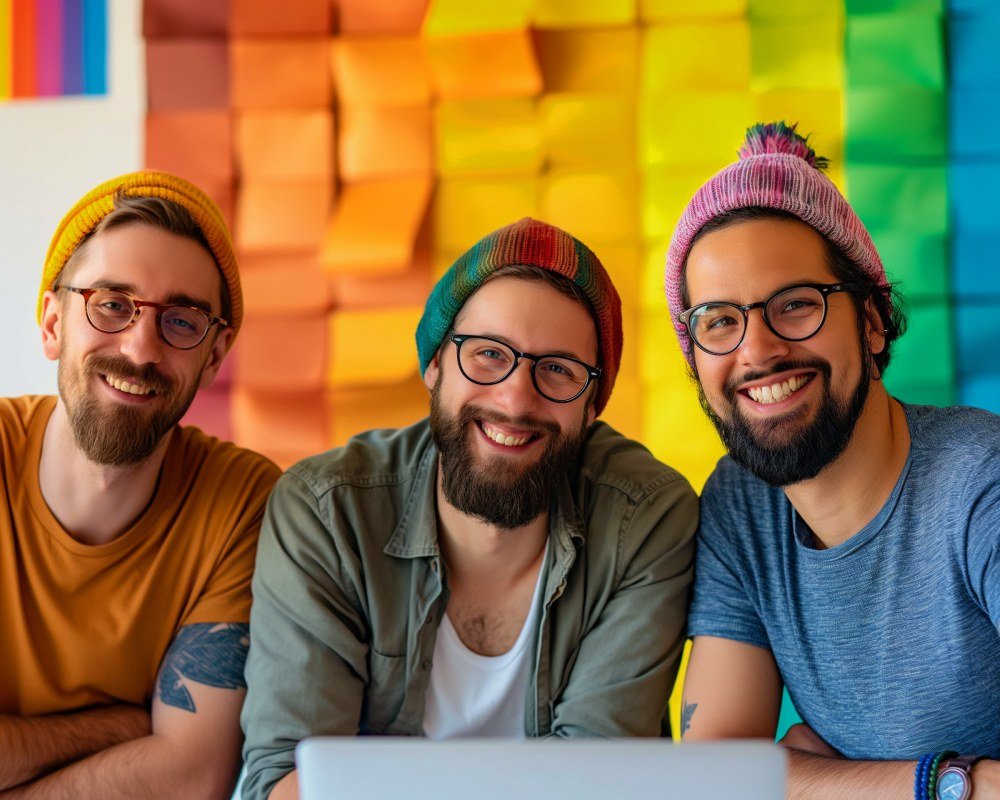
7. Discrimination Against Transgender People: Unique Challenges and Danger
While discrimination impacts all segments of the LGBTQ community, discrimination against transgender people frequently manifests with particularly harsh consequences. Trans individuals challenge one of the most fundamental social assumptions—that assigned sex at birth forever determines one’s identity and roles. Societies rigidly enforcing gender binaries often react violently or ostracize those who transition or express gender nonconformity.
Societal Misunderstandings
- “It’s Just a Phase”: Many assume being trans is a trend, confusion, or mental illness. Despite decades of scientific and medical consensus affirming the legitimacy of gender identity and transitioning, dismissals persist.
- Invasive Curiosity: Trans people often endure questions about their bodies, surgeries, or intimate details. This objectification reduces them to curiosities rather than fully recognized individuals.
- Bathroom and Privacy Debates: Public discourse around “bathroom bills” exemplifies how trans individuals’ basic needs—like safe bathroom access—become politicized. Fearmongers cast trans women as threats to cisgender women, though evidence does not support these claims.
Violence and Vulnerability
- High Murder Rates: Transgender women, especially trans women of color, face disproportionately high rates of homicide. In some countries, this is a regular occurrence, highlighting a lethal intersection of transphobia, sexism, and racism.
- Sex Work and Survival: Due to rampant employment discrimination, some trans people turn to sex work for income. This leaves them exposed to further violence and legal persecution, perpetuating a cycle of vulnerability.
- Healthcare Hurdles: Finding doctors experienced in trans healthcare—or even those willing to treat trans patients respectfully—can be daunting. Denial of care or ignorant medical practices can threaten physical and mental health.
Cultural and Legal Obstacles
- Identity Documents: Many governments make it incredibly difficult for trans people to correct their legal documents (birth certificates, passports). Mismatched IDs expose them to harassment or rejection in jobs, voting, or traveling.
- Family and Community Rejection: Coming out as trans can invite intense hostility. Trans youth may be expelled from home, bullied at school, or forced into reparative therapies. The isolation can fuel mental health crises.
As with gay men, the question arises: “Why do people hate the LGBTQ+ community so much?” For trans folks, the fear factor intensifies around deeply ingrained ideas about gender. People who rely on strict binaries can feel threatened by the existence of trans identities. Overcoming this prejudice necessitates widespread education on gender identity, visibility of trans voices, and robust legal frameworks ensuring trans rights. By addressing the unique challenges facing transgender individuals, broader LGBTQ activism can become more inclusive, championing a movement where no one’s identity is deemed illegitimate or deserving of hate.
8. Why Do People Hate the LGBTQ+ Community So Much?: Common Themes
Across the spectrum of LGBTQ identities—gay, lesbian, bisexual, transgender, queer, non-binary—discrimination’s roots share overlapping themes. Asking, “Why do people hate the LGBTQ+ community so much?” often leads us to recurring core issues:
- Clash with Traditional Norms
Many societies place rigid importance on heterosexual marriage, male/female gender roles, and procreation. LGBTQ existence challenges these norms, provoking fear that “time-honored” ways of life will vanish. Such anxieties frequently manifest as scapegoating—claiming the LGBTQ community erodes morality or societal stability. - Religious Dogma
Interpretations of religious texts sometimes paint LGBTQ identities as sinful. While some faith communities have become more inclusive, others double down on literalist readings that justify intolerance. Their influence can be especially potent where religion wields strong cultural or legal power. - Political Capital
In many political systems, fomenting anti-LGBTQ sentiment can serve as a rallying call to conservative voters. Politicians or leaders posture as defenders of “family values,” painting LGBTQ rights as morally corrupting. This tactic often distracts from other social issues, uniting a base against a marginalized scapegoat. - Sexual and Gender Anxiety
Societies often teach that men should look and behave a certain way, and women should do likewise. LGBTQ people who blur or transcend these lines trigger anxiety in those clinging to conventional masculinity or femininity as their identity anchor. This can be especially pronounced among individuals harboring secret doubts about their own orientation or gender. - Ignorance and Isolation
People who have never encountered an openly LGBTQ individual may rely on stereotypes. Media portrayals that emphasize sensational or negative aspects (e.g., focusing heavily on queer criminals or fetishizing trans experiences) can mislead the public into believing such representations are universal truths. - Generational Gaps
Older generations—though not universally—might hold onto beliefs from eras when homosexuality was criminalized or labeled a psychiatric disorder. While younger people often become more accepting (exposed to diverse voices online), older segments of society can find shifting attitudes unsettling.
Ultimately, these themes echo a primary factor: fear. Whether rooted in personal insecurities, religious teachings, or cultural conditioning, fear of the unfamiliar—especially around something as intimate as sexuality or gender—drives individuals to lash out. Recognizing these triggers for hatred is crucial. It lets activists, educators, and allies craft strategies that address root causes—be it misinformation, poor representation, or political exploitation—rather than just reacting to symptoms. The next steps involve forging open dialogue, reforming policies, and ensuring that younger generations are raised with empathy, diversity, and critical thinking.
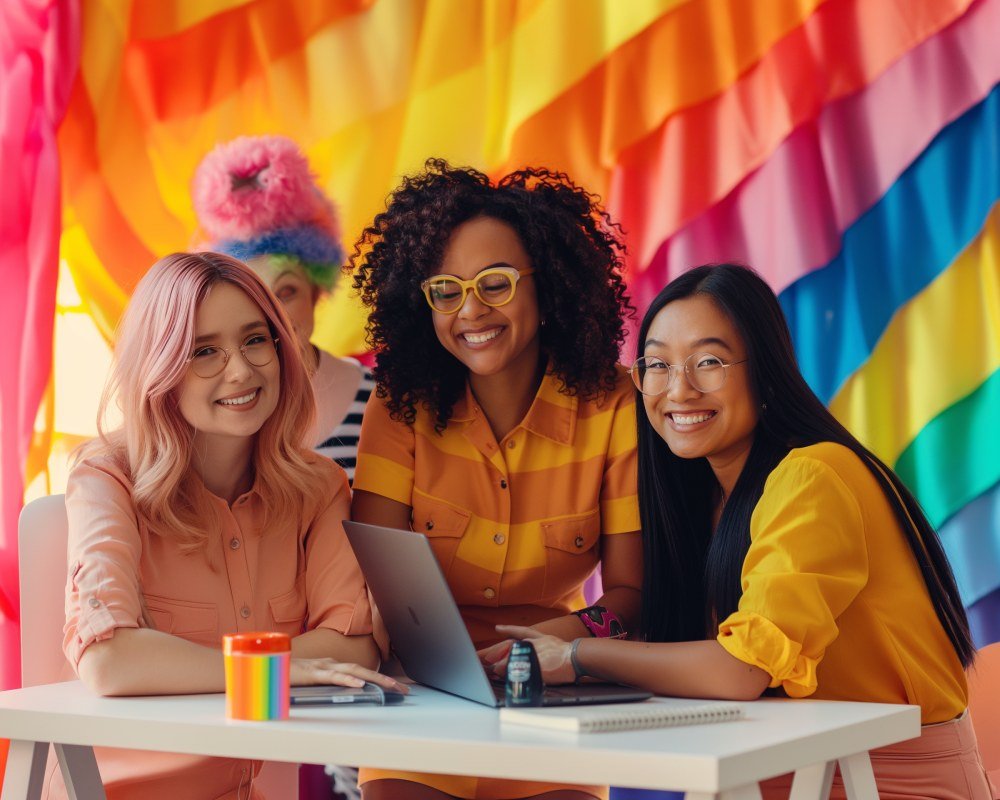
9. Intersectionality: Race, Class, Ability, and More
LGBTQ discrimination rarely acts in isolation. Instead, it intersects with other forms of oppression, such as racism, classism, sexism, and ableism. This idea of intersectionality—coined by legal scholar Kimberlé Crenshaw—highlights how individuals have multiple, layered identities that influence their social experiences. For LGBTQ folks who are also people of color, disabled, or members of religious minorities, discrimination can intensify significantly.
Race and LGBTQ Discrimination
- Double Marginalization: A Black transgender woman may endure racism from mainstream society while also encountering transphobia, including from within her own racial or ethnic community. This dual burden leaves her more vulnerable to violence and isolation.
- Cultural Barriers to Acceptance: Some communities of color, deeply rooted in religious or cultural traditions, have stigmatized homosexuality or trans identity. LGBTQ members may feel torn between ethnic solidarity and living openly.
Class and Economic Status
- Access to Resources: Wealthier LGBTQ individuals can potentially move to more accepting cities, afford private healthcare for transition, or pay for legal assistance. Low-income queer people often cannot escape hostile environments or face additional hurdles (like lack of insurance or public housing discrimination).
- Homelessness: LGBTQ youth constitute a disproportionate percentage of the homeless population in some countries, often due to family rejection. Those without financial support or stable housing are more susceptible to harassment, police mistreatment, and exploitation.
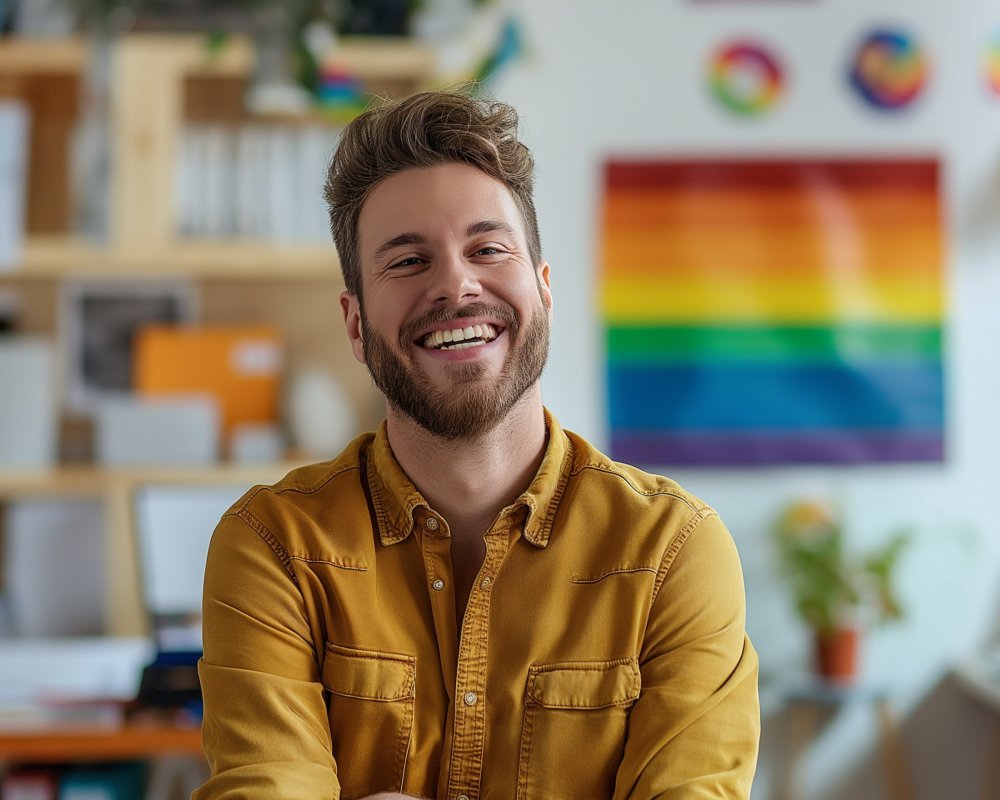
Disability
- Bias Within Bias: An LGBTQ person with a disability may not only face homophobia or transphobia but also ableism. Spaces designated as “safe” for LGBTQ folks may be physically inaccessible or lack accommodations for neurodivergent individuals.
- Healthcare Complexities: A disabled trans person might find few practitioners skilled in both disability and transition care, compounding the difficulty of seeking medical support.
Religious or Linguistic Minorities
- Language Barriers: Queer immigrants or refugees might struggle to communicate their needs in a new language, leading to further isolation.
- Community Gatekeeping: Being LGBTQ can lead to expulsion from tight-knit immigrant or religious communities, especially if these communities fear assimilation challenges or moral condemnation.
Intersectionality underscores that LGBTQ DISCRIMINATION doesn’t impact everyone equally. While the question, “Why do people hate the LGBTQ+ community so much?” is universal, the lived realities vary dramatically. Advocacy efforts must therefore consider these overlapping oppressions. Policies addressing anti-gay discrimination alone won’t suffice if they ignore racial profiling or the inaccessibility of government services. Building inclusive coalitions ensures that the most vulnerable among the LGBTQ population—like transgender women of color—are not left behind, and that the fight against all forms of discrimination remains holistic, strategic, and empathetic.
10. The Role of Religion, Culture, and Tradition
When discussing why do so many people hate LGBT, religion, culture, and tradition frequently emerge as central justifications. However, these elements can vary greatly in how they influence attitudes toward LGBTQ individuals. Some faith groups fully affirm LGBTQ rights; others vehemently oppose them, citing scriptures or long-held traditions.
Religion as a Double-Edged Sword
- Condemnation vs. Compassion: Certain religious doctrines read homosexuality or gender transitions as sins. Faith leaders may preach that being LGBTQ is immoral, feeding bigotry. Conversely, many religious people, including clergy, espouse inclusivity based on teachings of love and human dignity.
- Institutional Barriers: Large religious institutions sometimes mobilize political campaigns to block LGBTQ rights (e.g., same-sex marriage bans). They can funnel resources into “conversion therapies” or push lawmakers to limit trans healthcare access.
- Progressive Movements: Movements like “queer theology” reinterpret sacred texts, highlighting acceptance. Some churches celebrate same-gender unions or ordain openly queer ministers, challenging the notion that faith and queerness are incompatible.
Cultural and Traditional Values
- Honor, Family, and Lineage: In many cultures, one’s value is tied to continuing the family line through heterosexual marriage and children. LGBTQ individuals may be seen as rejecting or betraying these obligations.
- Community Pressure: Living in close-knit ethnic or tribal communities can be challenging for queer members. Exclusion or shame from elders fosters secrecy. In some places, families attempt forced marriages to “correct” or hide LGBTQ identities.
- Syncretic Traditions: Certain historical practices recognized or honored gender-diverse roles (like the two-spirit concept in some Native American tribes or hijras in South Asia). Modern forms of homophobia may reflect colonial-era influences superimposed on these older, more fluid traditions.
Balancing Respect and Critique
Accusing an entire religion or culture of bigotry oversimplifies. Millions of LGBTQ people themselves belong to these communities, practicing faith and preserving traditions. The tension arises when certain interpretations condone violence or ostracism. Progress requires nuanced dialogues: acknowledging the real hurt inflicted by harmful teachings, while also respecting those who practice their faith in inclusive ways.
Ultimately, “Why do people hate the LGBTQ+ community so much?” often loops back to how religious or cultural norms are used to define “acceptable” expressions of love and identity. The path forward lies not in discarding religion or tradition outright, but in encouraging open scholarship, empathetic leadership, and community-driven transformations that uphold human rights without requiring believers to abandon deeply held spirituality. Change may be incremental, but every step fosters a version of faith and culture that harmonizes with the dignity of all individuals, including LGBTQ people.
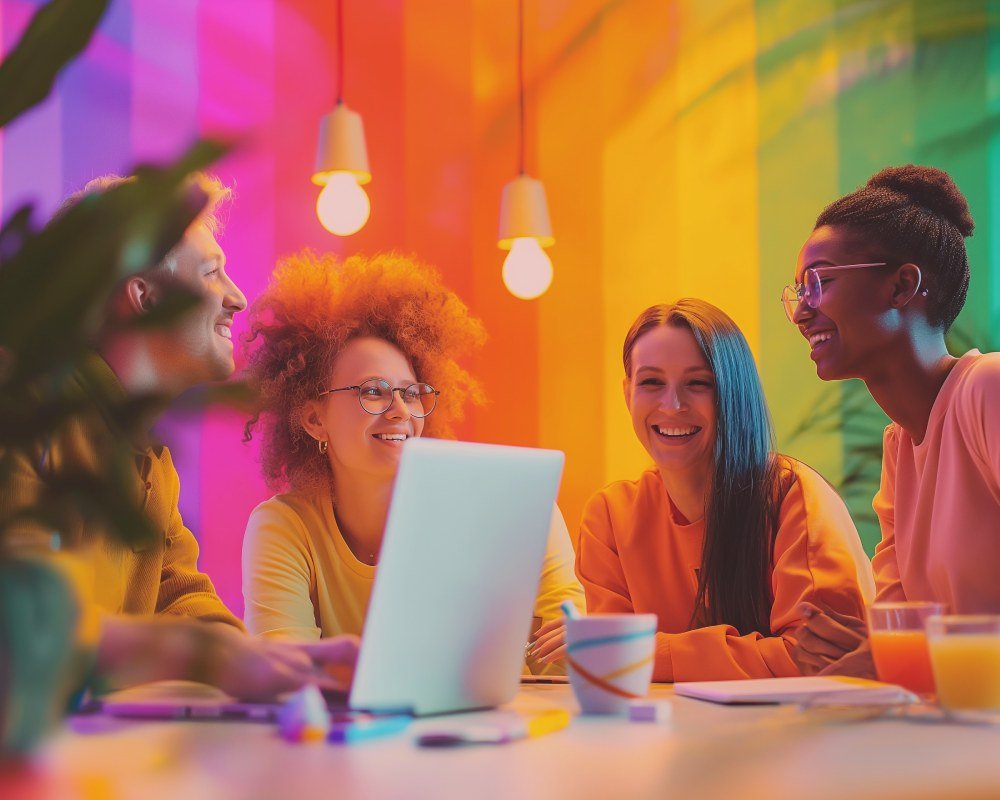
11. Political Influences on LGBTQ Rights
Politics shape whether a society supports or suppresses LGBTQ rights. People discriminate against LGBTQ people for a variety of reasons, but political leadership and legislation can either reinforce bigotry or promote equality. Over the last few decades, countries worldwide have diverged widely in their approach:
Supportive Legislation
- Anti-Discrimination Laws: Many nations have enacted laws protecting LGBTQ people from discrimination in housing, employment, and public accommodations. Such legal frameworks reduce overt prejudice, though enforcement can remain uneven.
- Marriage Equality: A growing list of countries allows same-sex marriage. This symbolic and legal recognition signals that same-gender couples deserve the same dignity and benefits as heterosexual ones.
- Gender Recognition Policies: Progressive policies enable transgender individuals to change gender markers on documents without invasive surgeries or psychological evaluations. Countries like Argentina pioneered “self-ID” laws that affirm trans autonomy.
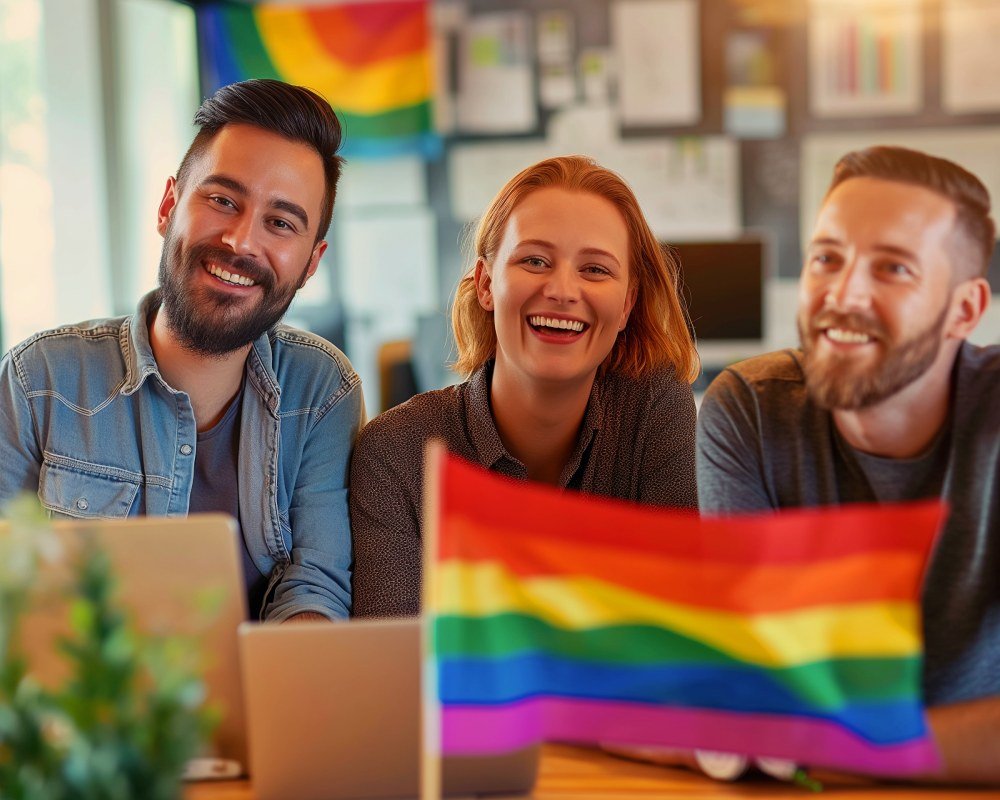
Regressive Policies
- Criminalization: In over 60 countries, homosexuality is illegal. In some, the penalty can be life imprisonment or even death. These laws stem from colonial legacies, religious mandates, or nationalist sentiments linking “morality” to heteronormativity.
- Anti-Propaganda Laws: Russia’s “gay propaganda” law bans distribution of “homosexual propaganda” to minors. Such policies silence LGBTQ visibility, cast queer identities as corrupting the youth, and legitimize community hostility.
- Blocked Healthcare Access: Certain governments obstruct or heavily regulate gender-affirming care, limiting hormones or surgeries. This approach places trans people in precarious positions where they cannot receive basic medical support.
Electoral Exploitation
- Populist Tactics: Politicians may scapegoat LGBTQ communities to rally conservative voter bases, particularly in times of economic stress or social change. By painting “the gays” or “gender ideology” as threats, they galvanize fear-based votes.
- Culture Wars: In places like the United States, culture war issues (same-sex marriage, bathroom bills, etc.) become litmus tests for political alignment. This elevates LGBTQ rights to a polarizing wedge issue, overshadowing more nuanced policy debates.
Politics often answer “Why do so many people hate LGBT?” Politicians or parties can inflame or mitigate prejudice. Where leaders champion equality, society often follows suit, seeing inclusion as the new norm. Conversely, when states condone or actively participate in oppression, they send a clear message that LGBTQ citizens are second-class, emboldening hateful actors. For sustainable change, activists focus not only on legal reforms but also on transforming the cultural narratives in which these policies are embedded—showing that supporting LGBTQ rights is part of broader commitments to human dignity and justice.
12. Psychological Effects of Discrimination on LGBTQ Individuals
LGBTQ discrimination doesn’t just affect legal rights or social status; it profoundly impacts mental and emotional well-being. Facing hostility and invalidation—sometimes daily—can take a heavy toll. Understanding these psychological effects underscores why do so many people hate us because we exist? becomes more than a rhetorical question; it’s a lived reality with severe ramifications.
Minority Stress Theory
This framework suggests that individuals from stigmatized groups experience chronic stress due to prejudice. LGBTQ folks contending with microaggressions, bullying, or family rejection endure higher levels of anxiety and hypervigilance. Over time, such stress may escalate into:
- Depression: Feeling isolated, hopeless, or fearful can breed persistent sadness.
- Suicidality: LGBTQ youth have significantly higher suicide attempt rates than their heterosexual peers, often linked to rejection or bullying.
- Substance Use: Some may turn to drugs or alcohol to cope, leading to further health and social complications.
Internalized Homophobia/Transphobia
Prolonged exposure to negative messages about LGBTQ identities can lead individuals to internalize that hatred. They might:
- Feel Deep Shame: Believing they are inherently flawed or sinful.
- Hide or Suppress Their Orientation: Concealing their identity at work, among friends, or even with themselves to avoid rejection.
- Act Out Prejudice: In some cases, they project hostility onto other LGBTQ people, ironically repeating the cycle of discrimination.
Relationship Struggles
- Romantic/Family Tension: Partners might clash if one wants to be more open about their orientation while the other fears social backlash. Families that only conditionally accept a queer member can cause prolonged emotional distance or mental anguish.
- Reduced Access to Support Systems: If a family or community rejects someone, they lose critical emotional backing, intensifying feelings of loneliness.
Protective Factors
Despite these hardships, many LGBTQ individuals cultivate resilience:
- Chosen Families: Finding supportive peers, mentors, or lovers who affirm their identity.
- Therapy and Community Support: Access to counselors aware of LGBTQ issues can mitigate mental health risks. Local or online support groups offer solidarity and resources.
- Positive Visibility: Role models in media or local communities who flourish openly as LGBTQ can provide hope and a vision of thriving, not merely surviving.
Acknowledging the serious psychological damage wrought by discrimination is crucial for shaping public policy, healthcare, and community outreach. When societies enact protective laws or champion acceptance, the well-being of LGBTQ individuals improves. Conversely, spiking transphobic or homophobic rhetoric can trigger spikes in anxiety or depression. This intimate link between discrimination and mental health further highlights the urgency of dismantling harmful biases and building genuinely inclusive societies.

13. Global Perspectives: Regional Differences in LGBTQ DISCRIMINATION
While the overarching question—“Why do people hate the LGBTQ+ community so much?”—applies worldwide, the intensity and forms of discrimination differ drastically by region. Legal contexts, cultural histories, and religious traditions shape how hostility manifests.

North America
- United States: Legally, many protections exist (e.g., marriage equality), yet state-level bills still target transgender athletes, bathroom access, or youth healthcare. Social acceptance is high in some urban areas but lacking in certain conservative states. Hate crimes persist, especially in rural regions.
- Canada: Known for progressive policies, including robust human rights laws protecting sexual orientation and gender identity. Nonetheless, LGBTQ Canadians outside major cities or those who are Indigenous, people of color, or disabled often confront layered discrimination.
Europe
- Western Europe: Many countries have legalized same-sex marriage or civil unions, with comprehensive anti-discrimination laws. Public acceptance is relatively high, but far-right movements occasionally stoke homophobia.
- Eastern Europe: Nations like Poland and Hungary have seen governments that crack down on LGBTQ activism, labeling it anti-family or “LGBT ideology.” Pride marches face bans or violent counter-protests. EU interventions can pressure governments to uphold human rights standards.
Africa
- Legal Criminalization: In many African nations, colonial-era anti-sodomy laws remain on the books, punishing homosexuality with imprisonment or worse. Cultural and religious beliefs also fuel persecution.
- Activism Under Threat: LGBTQ activists face enormous risks, from police raids to community violence. Yet grassroots groups persist, advancing smaller local victories like protection from eviction or open dialogue with local leaders.
Asia
- Legal Diversity: Some regions, like Taiwan, legalized same-sex marriage—an unprecedented move in East Asia—while countries such as Brunei introduced harsher penalties for same-sex intimacy. India struck down colonial anti-gay legislation in 2018, but social stigma remains high.
- Trans Visibility: Nations like Thailand are famed for visible transgender communities (often referred to as “kathoey”), but legal recognition of trans rights remains limited. Social acceptance doesn’t always translate into robust legal protections.
Latin America
- Progressive Legislation: Countries like Argentina and Uruguay lead with advanced trans rights laws, and same-sex marriage is legal in several nations (e.g., Brazil, Colombia, Argentina).
- Violence and Machismo: Despite legal gains, cultural machismo fosters violence against gay men and trans women. Hate crimes in Brazil, for instance, remain among the highest in the world.
This snapshot reveals how LGBTQ DISCRIMINATION is not a monolith. While some areas are forging inclusive policies, others remain trapped in or regressing toward overt criminalization and extreme hostility. Global solidarity—exchanging legal tactics, cultural strategies, and support networks—plays a crucial role in pushing for universal LGBTQ rights. The next step is ensuring that regional victories inspire broader systemic shifts, eventually rendering homophobia and transphobia relics of the past.
14. Pathways to Change: Overcoming Hate, Building Alliances
Addressing why do so many people hate LGBT might seem overwhelming, but history shows societies can and do evolve. From the Stonewall Riots in 1969 to the wave of marriage equality bills passed globally, progress is possible. Below are strategies that activists, allies, and policymakers use to fight discrimination and create lasting change.
1. Advocacy and Legal Reforms
- Anti-Discrimination Legislation: Passing laws that explicitly protect LGBTQ people in employment, housing, healthcare, and education fosters a climate of accountability. Such laws must be coupled with strong enforcement mechanisms.
- Decriminalization: In nations where same-sex relationships remain illegal, repealing these colonial-era statutes is foundational to safeguarding LGBTQ lives.
- Hate Crime Policies: Enhanced legal penalties for violence motivated by anti-LGBTQ bias signal that society will not tolerate hate-based aggression.
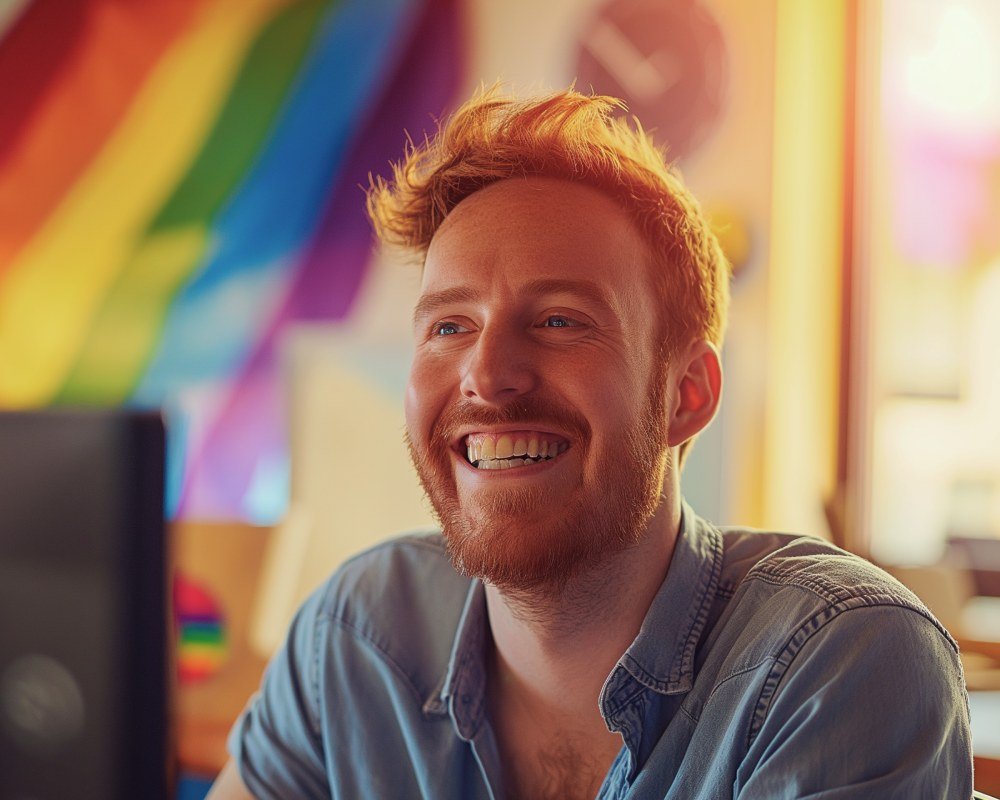
2. Public Education and Representation
- Inclusive Curriculum: Schools that include LGBTQ history and sex education help normalize queer identities and dispel myths early on.
- Media Visibility: Positive portrayals of LGBTQ individuals in films, TV, news, and social media help challenge stereotypes. Representation can soften opposition by humanizing LGBTQ people for viewers who have never met an openly queer or trans person.
3. Intersectional Approaches
- Coalition Building: Partnerships between LGBTQ organizations and groups advocating for racial justice, disability rights, or women’s rights create a united front. This fosters resource sharing and a broader base of political support.
- Local Community Organizing: Grassroots efforts tailored to cultural contexts can break down barriers more effectively than top-down mandates. Faith-based affirming groups, bilingual outreach in immigrant communities, or trans-led health initiatives offer specialized support.
4. Allyship and Personal Engagement
- Conversations that Connect: Engaging calmly with friends, family, or coworkers who hold discriminatory views may not yield immediate change, but consistent, empathetic dialogue can plant seeds of doubt about long-held biases.
- Public Figures Leading by Example: When respected leaders, celebrities, or sports icons come out or advocate publicly for LGBTQ rights, they challenge homophobia’s mainstream acceptability.
5. Resilience and Self-Care
- Support Networks: LGBTQ communities often form “chosen families” that provide belonging and understanding. These networks are vital for sustaining activism and emotional health.
- Professional Support: Therapy, counseling, or support groups specifically for LGBTQ individuals can mitigate minority stress and promote healing after trauma or discrimination.
Though no single strategy will instantly eradicate homophobia or transphobia, a multipronged approach steadily chips away at prejudice. Understanding “why do people hate the LGBTQ+ community so much?” is not enough; turning insight into action is the next vital step. Overcoming generational beliefs, political resistance, and cultural stigmas demands patience and solidarity—but each policy victory, educational program, or personal breakthrough brings a more inclusive future into focus.

15. Conclusion: Charting a Future Beyond LGBTQ Discrimination
Despite centuries of systemic oppression and ongoing challenges, there is reason for hope in the global fight against LGBTQ DISCRIMINATION. As we’ve traced throughout this article, queer and transgender individuals continue to face hostility, from subtle everyday slights to violent hate crimes. Society repeatedly forces us to ask: “Why do so many people hate LGBT?” The answers—rooted in entrenched cultural norms, religious dogma, political fearmongering, and personal prejudices—help us understand the scope and depth of the problem. Yet knowledge must guide us toward constructive change.
Reflecting on Progress
Remarkable developments over the last half-century illustrate that transformation is possible. The Stonewall Riots sparked a new era of LGBTQ activism, leading to Pride parades worldwide, groundbreaking legal wins, and a surge in queer visibility. Many countries, once bastions of homophobia, now endorse marriage equality. Likewise, trans rights are receiving increasing attention, with some nations adopting progressive policies around legal gender recognition. Overcoming discrimination is neither linear nor universal—backlash and regression remain real threats—but the arc does bend toward justice when collective efforts persist.
The Ongoing Struggle
We cannot ignore that in too many regions, being openly gay, lesbian, bisexual, or trans remains dangerous. Countries still uphold colonial anti-sodomy laws, subjecting LGBTQ individuals to fines, imprisonment, or death. Communities consider it acceptable to disown or assault queer family members under the guise of moral righteousness. Even in countries with legal protections, workplace discrimination, school bullying, and hate crimes remain painfully widespread. This disparity underscores that “It’s Always Been About Discrimination for LGBT People,” and dismantling centuries of stigma demands more than just legislative gestures.
Key Takeaways for Change
- Education as a Catalyst: Curriculums and media representations that include LGBTQ topics help shape open-minded perspectives early in life. When children learn that love and gender identity vary, they grow up with fewer biases.
- Robust Legal Protections: Comprehensive anti-discrimination laws, hate crime statutes, and the repeal of harmful legislation (like “Don’t Say Gay” bills or “bathroom bans”) establish a legal framework supporting equality. Enforcement is critical, alongside judicial systems that genuinely value human rights.
- Intersectional Advocacy: An LGBTQ movement that acknowledges how race, class, ability, and other factors compound discrimination ensures that the most vulnerable voices are heard. By forming alliances with other social justice causes, the movement garners broader influence and a shared vision of human dignity.
- Cultural Transformations: Taboos around discussing sexuality and gender identity must be shattered. Film, television, social media influencers, and local leadership can normalize LGBTQ stories, reframing them from scandalous or sinful to authentic expressions of humanity.
- Religious Evolutions: Progressive faith leaders who emphasize compassion and inclusivity can counter fundamentalist rhetoric that justifies hate. Supporting them can help communities reconcile deeply valued religious beliefs with respect for LGBTQ experiences.
- Personal Conversations and Allyship: On an individual level, challenging homophobic or transphobic remarks—even casually—can slowly shift social norms. Allies who commit to ongoing learning and speaking up can mitigate ignorance and fear.
- Mental Health Support and Resilience: LGBTQ persons often need safe spaces—chosen families, online communities, queer-affirming counselors—to recover from trauma. Resilience strategies can include self-care, pride in one’s identity, and active participation in supportive networks.
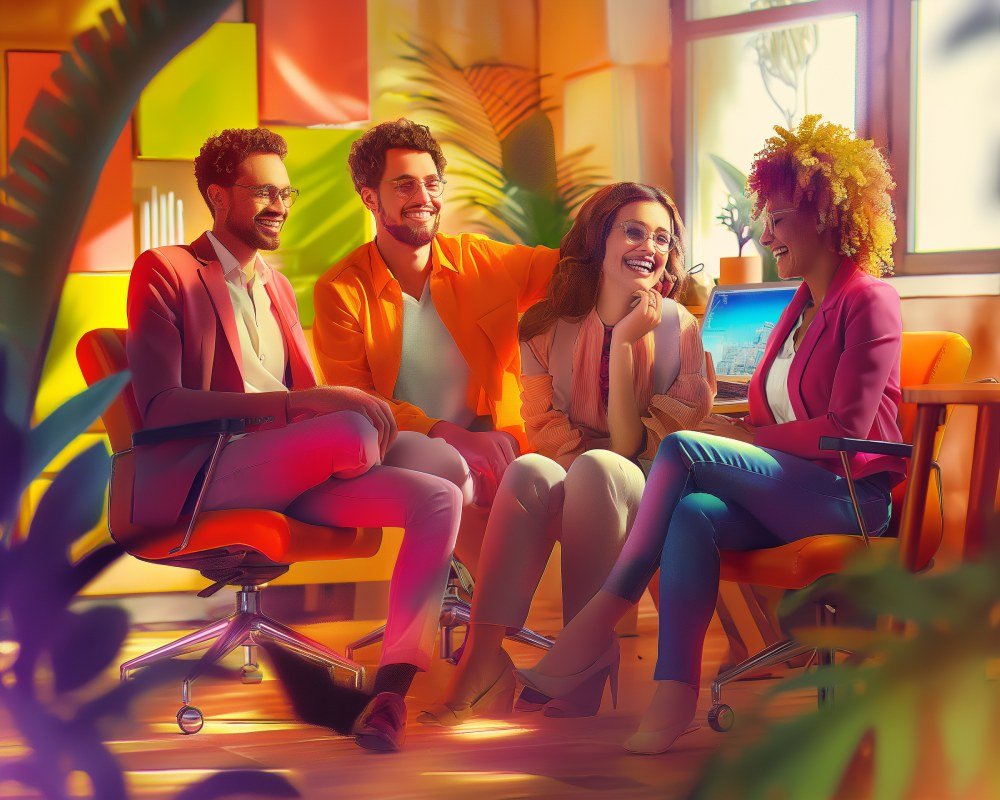
Envisioning a Future Without LGBTQ Discrimination
The ultimate goal is a world where questions like “Why do people hate the LGBTQ+ community so much?” become obsolete because hate no longer finds fertile ground. This utopian vision requires both structural changes (legal recognition, policy reforms) and cultural shifts (breaking stereotypes, normalizing LGBTQ presence). We inch closer each time a child grows up learning that love can take many forms, each time a politician invests energy in protecting rather than demonizing queer citizens, and each time a religious community embraces empathy over condemnation.
We must accept that prejudice, having been woven into the social fabric for generations, will not vanish overnight. Yet, as the global community grapples with broader human rights issues—from racial justice to climate change—there’s a growing recognition that no one is truly free until all are free. This includes, unequivocally, the LGBTQ population. Real progress emerges from constant, collective effort: activists pushing for policy, educators shaping new minds, artists telling fresh narratives, and everyday people refusing to remain silent in the face of bigotry.
In summary, LGBTQ discrimination reflects some of humanity’s darkest impulses—fear of the unknown, desire for control, and scapegoating—but our species is also capable of profound compassion, learning, and renewal. By diagnosing the root causes—whether religious, cultural, political, or psychological—we lay the groundwork for solutions. Each conversation that challenges hateful assumptions, each law that enshrines queer equality, and each supportive gesture between neighbors can tilt our world toward inclusivity.
As long as those who experience discrimination continue to speak out, form communities, and claim their rightful space, the hateful question of “Why do so many people hate us because we exist?” may one day be replaced with a triumphant statement: We exist, we thrive, and we are loved, free from the shackles of ignorance that once sought to bind us.

More Recommended
Pride in Advertising: How Gay-Owned Companies Are Embracing Inclusivity in Marketing
Gay-owned companies are leading the charge in embracing diversity and inclusivity in their marketing strategies. [...]
How Gay-Friendly Businesses are Shaping the Future of Marketing
Breaking Barriers: How Gay-Friendly Businesses are Shaping the Future of Marketing – of headings and [...]
10 Best Gay Nude Beaches in the USA
10 Best Gay Nude Beaches in the USA, The United States is home to a [...]
How Olivia Cruises Create Safe Spaces for Lesbian Travelers
How Olivia Cruises Create Safe Spaces for Lesbian Travelers – Olivia Cruises is a pioneer [...]
How Gay Businesses are Making a Lasting Impact in the Market
Beyond Pride Month: How Gay Businesses are Making a Lasting Impact in the Market As [...]
Top Gay-Friendly Companies and Why They Matter
Top Gay-Friendly Companies and Why They Matter In today’s world, it is crucial for companies [...]
Why Lesbian Cruises Empower Women in the LGBTQ+ Community
Why Lesbian Cruises Empower Women in the LGBTQ+ Community – Embarking on a lesbian cruise [...]
Capitalizing on Diversity: Why Brands Should Support and Market Gay-Owned Businesses
Capitalizing on Diversity: Why Brands Should Support and Market Gay-Owned Businesses – to: “Leveraging Diversity: [...]
How to Create a Gay-Inclusive Environment in Schools
How to Create a Gay-Inclusive Environment in Schools – Schools play a crucial role in [...]